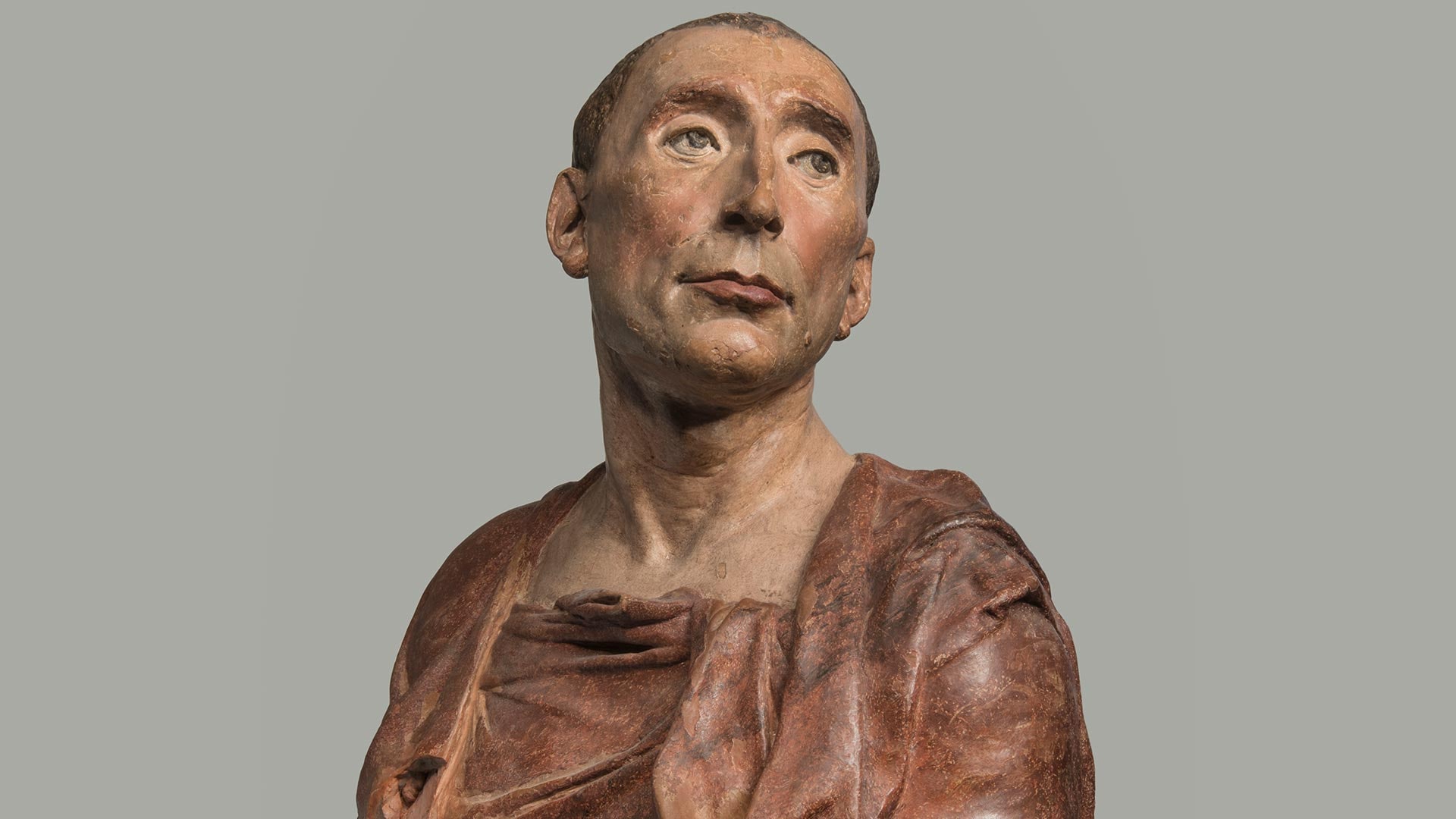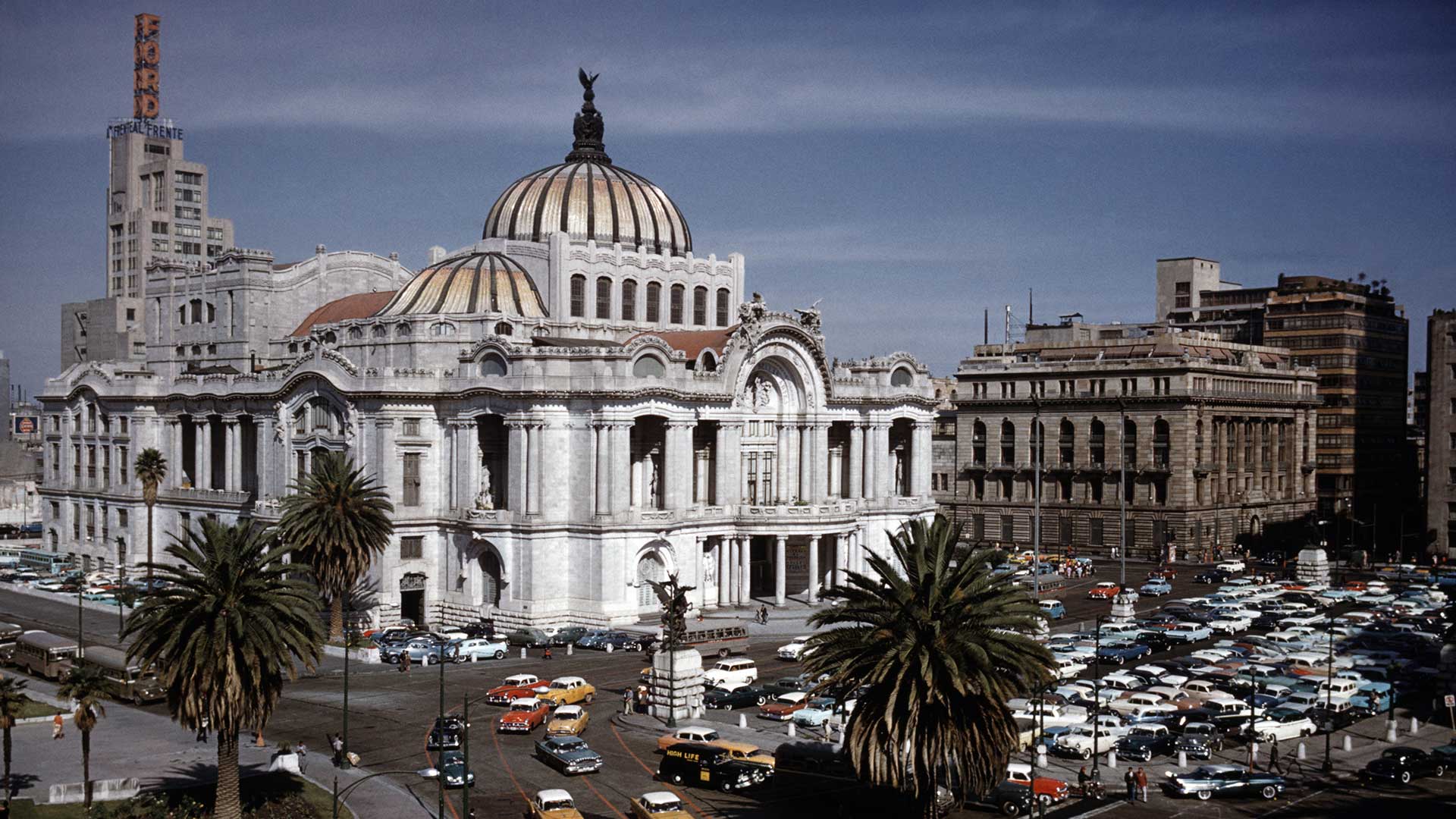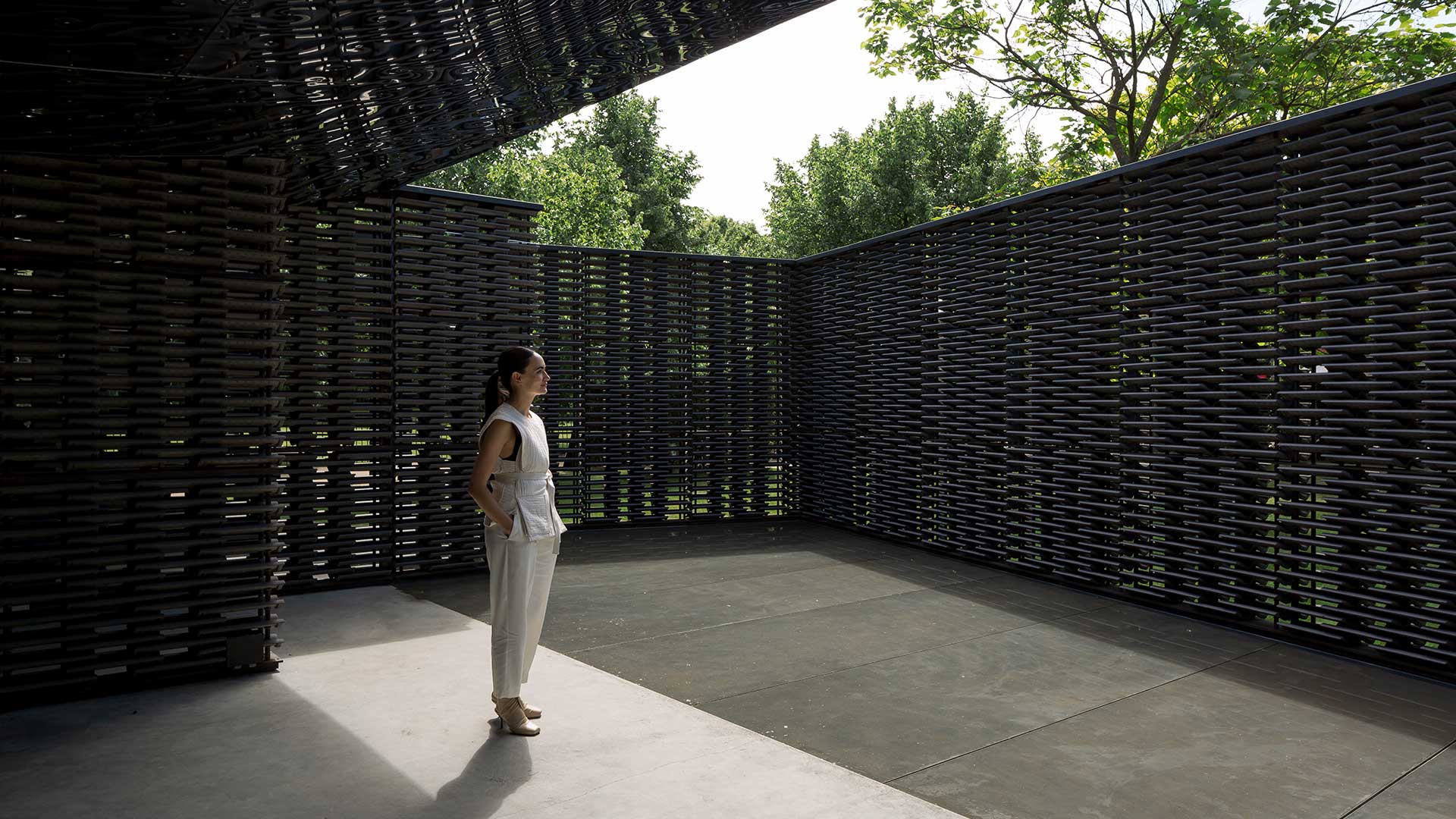Luigi Ghirri’s work seems to have a nearly universal effect on anyone who encounters it. You see half a dozen of his deceptively simple color images and fall quickly under his spell: an empty basketball court, a puddle in a road reflecting a palm tree, a kids’ slide on a beach, a red Coca-Cola flag against a pale blue sky, a view of an Italian countryside that seems haunted by its own ordinariness, an empty piazza that looks like a de Chirico in broad daylight. The initial enthusiastic reaction—“What a great photograph!”—gives way, after only a little further sampling, to the conviction “He’s a great photographer!” Actually, that might be understating things. E. M. Cioran wisely warned that the farther a person advances in life the less there is to convert to, but even at an advanced stage of photographic appreciation you do not simply become an admirer of Ghirri’s work; you become a convert. The Ghirri cult is all the more powerful because it is posthumous: he died, aged just forty-nine, in 1992. Considerable though his reputation was in Italy—both as artist and as proselytizer for serious photography—international appreciation of his work has been predominantly retrospective. Many of us did not follow his artistic development incrementally, as it unfolded. Instead, the treasure trove of a life’s work has been discovered all at once and is still in the process of being sifted, examined, curated, and presented in his absence. Or, to put it in the kind of terms Ghirri seems to have favored, we are still working out which of the various available projections offer the best ways to map the territory he made his own. Like many photographers, Ghirri was fascinated to the point of obsession by the mechanical and technical components of his craft—not as ends in themselves but by the way that a dedication to the task of picture making could bring us to “the threshold” of the metaphysical. Manifesting itself in several forms, this threshold—a key word in Ghirri’s personal lexicon—is consistently found at “the strange and mysterious equilibrium between our inner worlds and the external world.” Within the broad and devoted church, we each have our own individual sense of the works or series of works in which this equilibrium is best achieved. For me these would include certain beach scenes and the depictions of the Italian landscape—especially those in which some kind of frame is included within the framing of the picture: a football goal (in the first picture of Ghirri’s I ever saw, without realizing who the photographer was), windows, mirrors, gates, gateposts, arches. Arches and gates seen from the road seem often to offer a view of—and lead to—nowhere in particular. The arch at Bagnolo San Vito or the gateposts at Formigine serve no functional purpose in that you don’t need to pass through them to get to what lies geographically or visually beyond, but they are aesthetically essential. They create a picture that was already there: “a photograph which already exists in the form of framed structures,” as Ghirri put it. Or, as he said of a picture of a white gate: “Located at a given point in space, this gate becomes the focal point of the whole image. A continuous dynamic exchange occurs between a representation of reality and the underlying reality: it becomes a mechanism in which reality gradually dissolves into its own representation, creating something in which it is hard to distinguish between reality and representation.” The effect of all such framing devices is to usher us more deeply into the pictures. They serve as portals to another world, which turns out to be the same world. The work of no other photographer better illustrates the line ascribed either to W. B. Yeats or to Paul Éluard: “There is another world, but it’s in this world.” Ghirri himself once made a similar point when he described framing as “an exploration of a reality that lies within reality itself.” This reality is dreamlike—as long as we concede that the dream is real. Everything is “immediately familiar yet mysterious”—and the mystery is fathomless because it is quite transparent. (“Transparency” was another key word for Ghirri; repeating the practical/metaphysical pattern observed earlier—the literal production of transparent slide film was a way of approaching “the very idea of transparency itself.”) Nothing is hidden, everything is withheld. How, our eyes demand of our brains, can clarity be so opaque? Every mirror is also a window, and vice versa: we are sealed in by that which offers potential egress. The possibility of escape is indistinguishable from the illusion of confinement. (Not that anyone wishes to escape, to wake from these lucid dreams.) What lies beyond is deeper immersion in the surface. Every bit of the phenomenal world—toilets near the coast at L’Île Rousse, say—is consistent with every other bit, even the parts of it that remain unseen, beyond the frame. The larger world is implicit in the smallest part; the smallest detail suggests the whole. Cartier-Bresson’s world exists only momentarily, and within the frame of the photograph. With Ghirri we get the impression that if we turned slowly around, away from what was photographed, we would see ... more of the same, a further-extent Ghirri-land! Photographs, by virtue of his theory and practice of framing, exist within photographs, some offering up mirror images of a poolside paradise, others (in the mirrors of the men’s urinals!) revealing the photographer himself, “inside the narrative, an individual inside the story.” Except, within a given picture, there is no story. The possibility of narrative emerges only when the photographs are viewed in sequence. In this regard the stillness of the individual pictures—no moving trees or people hurrying and going—is both symptomatic and causal. Again the logic is circular, hermetic. The stillness is the spatial manifestation of the absence of time and the temporal expression of a lack of movement through space. Hence the lack of narrative. There is no going beyond the moment because, in anything but the technical sense—1/250th of a second or whatever—the moment does not exist. Cameras provide the option of focusing on a distance given as infinity. The equivalent shutter speed would, I suppose, be eternity. Each of Ghirri’s pictures offers us a specific moment of eternity. By offering themselves entirely, in an instant, they make us feel that we could stand and gaze into them not just for a long time but on the threshold of forever.
Please sign up for Aesop Hong Kong's WhatsApp to ensure your data is secured for system upgrade.Learn more
Cart
Size
Quantity
We are pleased to offer shipping to Hong Kong SAR, China and Macau SAR, China.
All prices are listed in HKD.
Included Taxes


